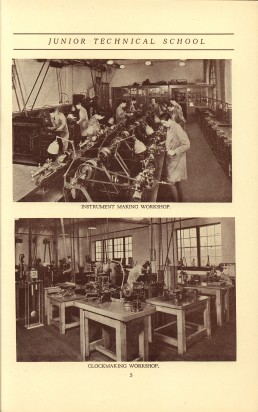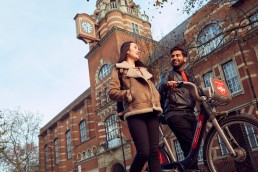Since the beginning of the 18th century, Clerkenwell was the centre of clock- and watch-making thanks mostly to the influx of Huguenots to the capital.
The Huguenots were welcomed for their craftsmanship. They were multi-skilled in weaving, book-binding and wig-making among other trades and mostly settled in Clerkenwell, which was then just outside London’s city walls and afforded them a more comfortable living. They helped transform Clerkenwell into the home of the clock-making industry; streets became lined with subdivisions of the trade from escapement making to engine turning and finishing.
With the emerging watch-making market in Switzerland, the trade in Clerkenwell began to dwindle. The Swiss revolutionised the trade and benefited from the use of new technology to mass produce watches. The English resisted adopting the new approach because they did not want to compromise on quality or craftsmanship. One of their strongest critics was John Bennett, a horological retailer in the City of London. Hefound the Swiss model of manufacturing favourable and established the Horological Institute with other clock-makers, who sought to raise the standards of British horology.
The Horology Institute was based in Northampton Square opposite City, University of London, which then offered evening classes in horology. One of the students who benefited from the classes was the late George Daniels CBE, inventor of the co-axial escapement and one of the greatest horologist of his time. Prior to his invention, there was only one other escapement available in the market: the ‘lever escapement’, the brainchild of another British clock-maker, Thomas Mudge. The escapement in a clock connects the spring to the pendulum or balance wheel and controls the speed at which energy is transferred to move the hands. The co-axial escapement was one of the most significant advancements in clock-making in the last 250 years. It is currently licensed to Omega, who adopted the design in the manufacturing of their premium line.

George Daniels’ appreciation for City carries through to this day with a generous financial endowment which funds the annual George Daniels Lecture, a Professorship and Lectureship in Scientific Instrumentation and scholarships in that field of study. In turn, City continues to honour his innovative contribution to horology and named the clock on College Building after him. It was built by Messrs Dent & Co, the same family of clock-makers behind the construction of the clock on the Elizabeth Tower (popularly known as Big Ben). During World War II the George Daniels’ clock was taken out of service to protect it from aid raids. Today, it hangs proudly in an area that was once renowned for its clock-making.
